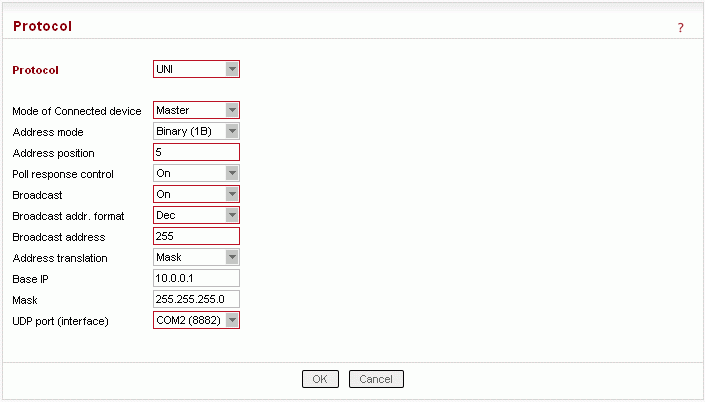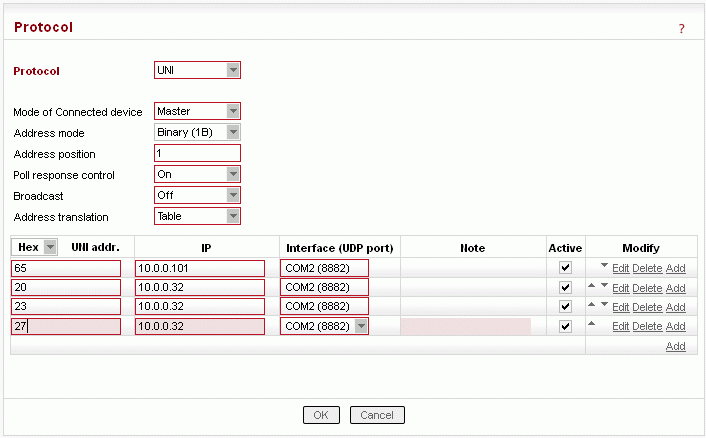Master reads the address byte defined by configuration and generates the destination IP address using the mask or the translation table. The message is then delivered to that IP address and the respective UDP port (e.g. the port No 8882 which is assigned to the COM2 interface).

An example of Master configuration is in the picture above. The
address translation then proceeds as follows:
The 5th byte
from the incoming message from SCADA centre is used to replace the last
byte of the Base IP and the resulting IP address is used as the
destination of the UDP datagram which contains the original SCADA
message.
Let assume that the content of 5th byte is 0x65 –
then the IP destination address will be 10.0.0.101 and the UDP port
8882.
The translation by a table is more versatile, however it requires an extra line of configuration for every remote in the network. The table has to be used when addresses of RipEX radiomodems and SCADA RTUs do not match or different ports (interfaces) at different remotes have to be configured.

The example of table in the picture above demonstrates a situation when there are three SCADA devices connected to the COM2 of a single RipEX unit over a RS485 bus.
The configuration of a Slave radiomodem is very simple, as demonstrated in the picture below. When a UNI Slave receives the UDP datagram from RF channel, it takes the original SCADA message and transmits it over the respective interface (the COM2 in our example).

If the SCADA device connected responds to the message within a timeout of 500 ms, the source IP address of the received UDP datagram is used as the destination for the response.(Note only one packet is accepted as a response). When the timeout expires, all messages received by the serial interface are discarded.